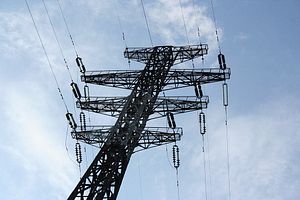Taliban blew up an electricity pylon in Baghlan province Tuesday. According to TOLOnews, the Chairman of Da Afghanistan Breshna Sherkat (DABS), Afghanistan’s state-owned utility company, confirmed that the Taliban blew up a “major electricity pylon in Dand-e-Shahabuddin area near Baghlan-Kunduz highway.” The chairman, Mirwais Alimi, told TOLOnews that it can be repaired in a day, provided the fighting ends. This attack nonetheless highlights the vulnerability of electricity transmission infrastructure in Afghanistan to militant attacks.
Baghlan province is situated south of Kunduz province and is bisected by the only highway to cross the Hindu Kush, a vital lifeline between Kabul and the north. Tuesday, as reported by the Pajhwok news agency, Afghan security forces launched a clearing operation outside of Baghlan’s capital in Dand-i-Ghori, saying that the area has been under Taliban control for nearly nine months. TOLOnews suggested that the blowing up of the electricity pylon was retaliation for the ongoing security operation.
In October, Taliban seized control of the city of Kunduz for 15 days. As noted by Gran Hewad in an excellent piece for the Afghanistan Analysts Network (AAN), the Taliban’s strong presence in Baghlan to the south was hugely important. Taliban were able to delay government reinforcement along the road. Indeed, it seems the taking of Kunduz was prefaced by the securing of Baghlan — something Afghan forces are now trying to correct. In early September a controversial understanding was reached between the government and local elders in Dand-i-Ghori in which the elders pledged to maintain order and prevent the targeting of government forces. Hewad goes into more detail but the key criticism of the agreement likened it to a surrender of the area to the Taliban.
As Afghan security forces battle Taliban in the province, the Taliban retaliated by blowing up a pylon carrying electricity from Uzbekistan to Kabul. This exposes a crucial vulnerability in Afghanistan’s energy infrastructure and underscores concerns some analysts have about regional initiatives to supply energy to South Asia from Central Asia. Afghanistan’s power infrastructure has been the focus of billions in development funds, yet the country remains energy insecure. In another AAN report, Mohsin Amin noted in February 2015 that in the winter Kabul receives 260 MW of electricity from abroad, namely Uzbekistan.
It’s two other Central Asian states, however, that many hope can supply Afghanistan in the future: Tajikistan and Kyrgyzstan. Although supporters frame the massive Central Asia South Asia Electricity Transmission and Trade (CASA-1000) Project as nearly finalized, skeptics point out that both source countries experience difficulties fulfilling their own domestic demand. Both need to complete massive hydropower projects which are imperiled due to downstream ire (Uzbekistan hates Tajikistan’s Rogun dam project) and funding issues (Kyrgyzstan nixed a deal with Russia recently because Moscow simply can’t pay for the projects it had agreed to fund).
And now a single blown pylon reiterates that Afghanistan is still an active war zone. The security issues surrounding the construction of large infrastructure projects and then ensuring smooth operation thereafter cannot be understated.

































